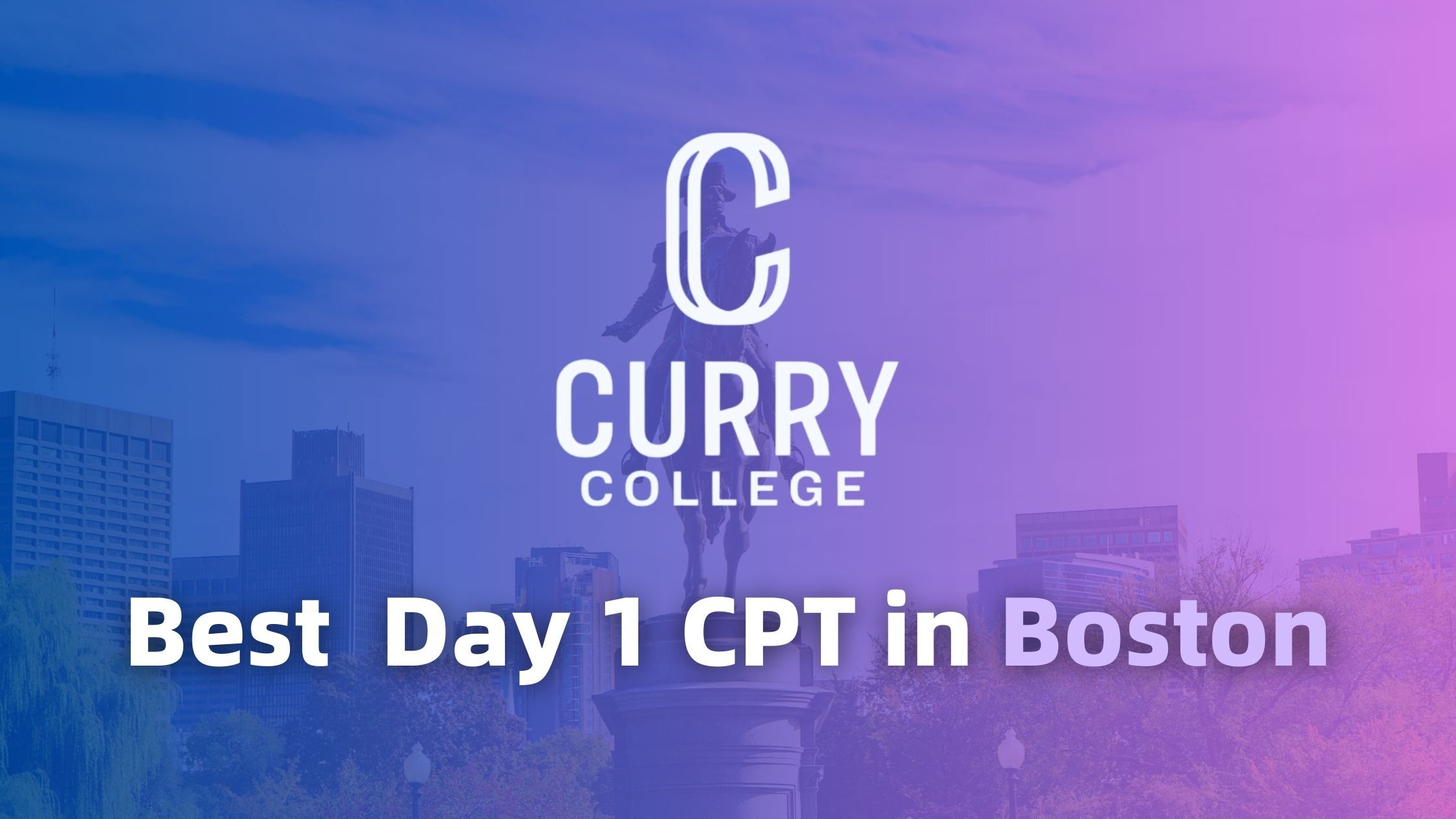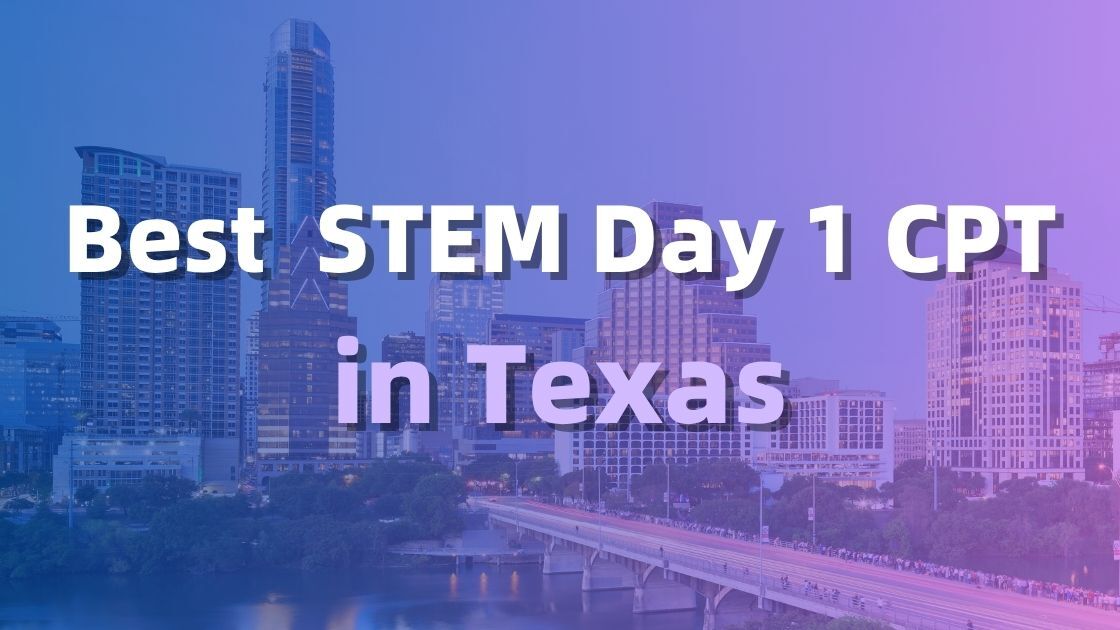Share this
What to Do Next: Making the Most of Your H1B Grace Period
by Bole Huang on May 21, 2024

The H1B visa grace periodNavigating the challenges of job loss or career transitions, particularly amidst widespread H1B layoffs and tech layoffs, offers a crucial lifeline for individuals. Understanding the intricacies of the H1B grace period during these visa layoffs becomes essential to make the most of this valuable time.
This article will explore eligibility requirements, restrictions, and strategies for effectively utilizing the H1B 60-day grace period. Options like finding new employment, changing your visa status, and transitioning to a student visa with Day 1 CPT are also on the agenda.
1. Understanding the H1B Grace Period
The H1B grace period serves as a crucial safety net for nonimmigrant workers, especially during tech layoffs and for foreign workers facing job loss or career transitions. This 60-day window, often called the H1B lost job grace period, allows individuals to maintain their legal status while exploring new opportunities.
1.1 - H1B grace period rules
- You can utilize the USCIS H1B grace period for up to 60 consecutive days or until your current H-1B period ends, whichever comes first. This offers a brief but critical window for transition.
- This grace period is available only once during each H-1B validity period.
- If you secure a new job with H-1B sponsorship within part of the 60 days, you're granted a new 60-day grace period, providing a fresh opportunity to stabilize your employment status in the U.S.
1.2 - Maintaining Legal Status
To avoid falling out of status during the grace period:
| Do's | Don'ts |
| File a change of status application | Engage in unauthorized employment |
| Find a new H1B sponsor | Overstay the 60-day period |
| Depart the U.S. if unable to secure new employment | Assume the grace period is automatically granted |
1.3 - Options During the Grace Period
1. Transfer to a new H1B employer
- New employers must file an I-129 petition before the end of the grace period.
- The new employer does not have to enter the employee in the annual H1B visa lottery, as the employee already has an H1B, streamlining the process for both parties.
2. Change nonimmigrant status
- Apply for a different visa category, such as a B-2 visitor or F-1 student.
3. Leave the US and reenter as an H1B selectant
- Current H-1B Visa Holders: If you have a valid H-1B visa stamp from a previous employer, you can re-enter the U.S. using this stamp along with the I-797 approval notice from your new employer, simplifying the re-entry process.
- Canadian Citizens: Canadians don't need a visa to enter the U.S. To enter H-1B status, simply present your I-797 approval notice at a port of entry, making the process straightforward for Canadian nationals.
- No H-1B Visa Stamp: If you're not Canadian and don't have an H-1B visa stamp (e.g., changed status to H-1B while in the U.S.), you must apply for the visa at a U.S. consulate or embassy before re-entering. This involves a visa interview and presenting the I-797 approval notice.

2. Exploring Alternative VISA Options
While the H1B grace period offers a valuable opportunity to explore new employment options, it's also essential to consider alternative visa categories such as the green card, adjustment of status, or a national interest waiver that may align with your unique circumstances and career goals.
2.1 - L-1 Intracompany Transferee Visa
- Available for employees of multinational companies in managerial positions or with specialized knowledge
- Enables employees to transfer to U.S. offices of the same company, provided they have spent a continuous year overseas, offering a seamless transition during the l1 to h1 change of status grace period.
2.2 - F-1 Student Visa with Day 1 CPT
- Apply to a credible school and obtain a signed I-20 form
- Inform the school of your intent to change your status
- Submit the change of status application online, along with supporting documents:
- Admission letter
- I-20 form
- Form I-539
- Biometrics fee (if applicable)
- SEVIS I-901 fee payment
- Financial proof
- Copies of I-94, I-797 Approval Notice, passport, and immigration documents
❗️We can help you with this option!
2.3 - O-1 Extraordinary Ability Visa
- For individuals with extraordinary ability or achievement in sciences, arts, education, business, or athletics
- Requires a detailed presentation of accomplishments and contributions to the field
2.4 - Country-Specific Visas
| Visa Category | Eligibility |
| E-3 Visa | Australian citizens working in specialty occupations |
| TN Visa | Canadian and Mexican citizens employed in certain professional occupations |
| H-1B Visa | Citizens of Chile and Singapore working in specialty occupations |
| E-2 Treaty Investor Visa | For foreign nationals investing substantially in a U.S. business |
❗️Get free assistance
Extend your stay in the U.S. with F1 Status
3. Transitioning to a Student Visa (F1) with Day 1 CPT
For H1B visa holders navigating job loss or career shifts, transitioning to a student visa (F1) with Day 1 CPT is a strategic move towards maintaining student status. The most convenient and most favorable option empowers F1 students to commence work from the first day of their academic program, subject to meeting eligibility criteria and adhering to the correct procedures. This pathway is particularly beneficial for those pursuing stem degrees, as it facilitates employment authorization from the outset.
- Immediate employment opportunities
- Extended applicability throughout the academic program
- Seamless transition from H1B to F1 status
- Straightforward application process
- Unaffected work experience for future career prospects
3.1 - Eligibility and Requirements
To be eligible for Day 1 CPT, students must:
- Enroll in a full-time academic program at a SEVP-certified school
- Secure an offer of employment related to their field of study
- Obtain a signed I-20 form from the school's DSO indicating CPT approval
3.2 - Choosing the Right University
When selecting a university for Day 1 CPT, consider the following:
| Factor | Description |
| Accreditation | Ensure the school is accredited and SEVP-certified |
| Program Relevance | Choose a program that aligns with your job nature and job description |
| RFE Support | Seek out universities known for their robust support of students during the RFE process (refer to our recommended university list). |
Over 200 large companies support Day 1 CPT, including:
- Amazon
- Microsoft
- Deloitte
- Intel
- IBM
- Apple
- Tesla
Check our list for more employers that support Day 1 CPT>
3.3 - Application Process
|
Step |
Action Required |
Documentation/Requirements |
|
1 |
Apply to a credible Day 1 CPT university |
Obtain a signed I-20 form |
|
2 |
Submit the change of status application online to USCIS |
|
|
3 |
File Form I-539 to Extend/Change Nonimmigrant Status |
Ensure everything is field correctly |
|
4 |
Adjust the start date of your F-1 status |
It must be within the end of the grace period. |
|
5 |
Monitor processing times |
It's crucial to stay updated on USCIS processing times to assess the need to file an H1B status extension. Should you find time is of the essence, consider the premium processing service at a fee of $1965, which promises a decision within a month. |
|
6 |
Address deferrals or delays |
In scenarios where USCIS hasn't made a decision before the intended F-1 start date, leading to a program start date deferral, it's advisable to file a second Form I-539 to bridge the gap, thus avoiding nonimmigrant status complications and potential unlawful presence issues. |

4. Solutions for any deferral or delay
For H-1B clients awaiting their new F-1 program start date and facing USCIS delays in change of status decisions, filing a second Form I-539 is a critical step in maintaining nonimmigrant status and smoothly transitioning to a new employer or academic program.
4.1 - Monitor Your Current Status and USCIS Processing Times
- Regularly check the USCIS processing times for Form I-539 applications.
- Ensure your H-1B status remains valid until your F-1 program's initial start date. If there's a risk of expiration, promptly file a second Form I-539 to request an extension of stay.
4.2 - Request Program Start Date Deferral
- Contact your Designated School Official (DSO) to request a deferral of your F-1 program start date if USCIS has not decided on your initial Form I-539 application for changing to F-1 status before your initially intended program start date.
- Obtain a new Form I-20 from your DSO reflecting the deferred program start date.
4.3 - Follow Up and Maintain Status
- After filing, regularly check the status of your application online through the USCIS case status tool.
- Avoid any activities that could violate your current H-1B status, such as unauthorized employment, to prevent issues related to unlawful presence and ensure your authorized stay remains valid.
4.4 - Communicate with Your DSO
- Keep your DSO informed about the status of your Form I-539 application and any updates from USCIS.
- Once your change of status to F-1 is approved, work with your DSO to ensure your SEVIS record is updated accordingly, which is crucial for maintaining valid employment authorization.
5. FAQs
1. Can I have over one 60-day grace period on an H-1B visa?Yes, it is possible to have multiple 60-day grace periods on an H-1B visa. Each time you receive a new I-94 record after a layoff, you are eligible for an additional 60-day grace period. This means that if you have been laid off and then secured a new H1B approval from a new employer, you may qualify for another grace period.
2. Am I allowed to travel during the H-1B 60-day grace period?No, you cannot travel without consequences during the H-1B 60-day grace period. If you leave the United States during this period, your grace period ends, affecting your authorized stay. To re-enter the U.S., you would need to obtain a different immigration status that allows for re-entry.
3. Does the H1B grace period reset?
Yes, once you have transferred your H1B, you can associate it with a new 60-day grace period, taking advantage of the portability feature with a new employer.
4. When does the H1B grace period start?
The H-1B grace period starts immediately after the cessation of employment.
5. Can I apply for H1B during the opt grace period?
Yes, you can apply for an H-1B visa during your OPT grace period.

Share this
- Day 1 CPT (32)
- H1B (24)
- Day 1 CPT Universities (17)
- H1B Lottery (11)
- CPT (6)
- Green card (5)
- University Application (4)
- F1 (3)
- F1 Status (3)
- International Students (3)
- USCIS (3)
- Concordia University Texas (2)
- F1 Reinstatement (2)
- H1B Layoff (2)
- H1B Status (2)
- OPT (2)
- STEM OPT (2)
- Westcliff University (2)
- change of status (2)
- Bay Atlantic University (1)
- Curry College (1)
- English Proficiency (1)
- Goldey-Beacom College (1)
- Green Card Application (1)
- H4 EAD (1)
- H4 Visa (1)
- Humphreys University (1)
- Immigration (1)
- International Student Travel (1)
- Jobs (1)
- L1 (1)
- Layoff (1)
- McDaniel University (1)
- O1 (1)
- Saint Peter's University (1)
- Salem University (1)
- Scholarships (1)
- Tax (1)
- November 2025 (2)
- October 2025 (1)
- September 2025 (3)
- August 2025 (2)
- June 2025 (1)
- May 2025 (2)
- March 2025 (2)
- November 2024 (2)
- October 2024 (4)
- September 2024 (3)
- August 2024 (3)
- July 2024 (2)
- June 2024 (7)
- May 2024 (3)
- April 2024 (4)
- March 2024 (3)
- February 2024 (5)
- January 2024 (1)
- October 2023 (3)
- September 2023 (6)
- August 2023 (10)
- July 2023 (3)
- June 2023 (4)
- May 2023 (1)
- April 2023 (1)
- February 2023 (1)
- November 2022 (1)
- October 2022 (3)
- September 2022 (1)
- August 2022 (1)

Full Day 1 CPT Universities List
Click here to view 30+ Day 1 CPT universities in different states
Scholarships & Payment Plan
Click here to explore extensive scholarships and financial aids
Get Free Assistance Now
We can help you with admission, fee waiver, and scholarships
Featured Articles
Studying and Working in the US
-Nov-22-2025-12-02-59-3078-AM.jpg)
Which Day 1 CPT Programs Offer a Fixed Summer Break? You Won’t Believe How Rare the Answer Is…

Why Curry College is a Top Choice of Day 1 CPT in Boston

Concordia University Texas Launches New MCS Program - A Top STEM Day 1 CPT Option
-Sep-20-2025-01-14-14-5002-AM.jpg)
H-1B “$100,000 Entry Fee” Rule Explained — What It Means for F1 and OPT Students and What To Do Now





.png?width=204&height=68&name=Verified%20(2).png)


.png?width=250&height=83&name=Logo%20-%20Rectangle%20(2).png)
.png?width=250&height=83&name=Logo%20-%20Rectangle%20(1).png)
